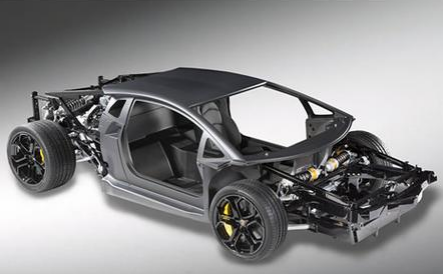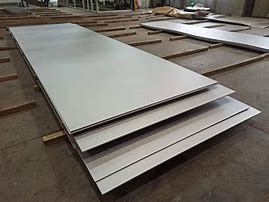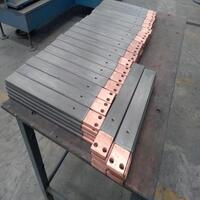1. Introduction
Just 24 hours ago, a viral video from Copenhagen showed a new eco-office wrapped entirely in a shimmering zinc facade that changes color with the weather—sparking a global spike in searches for ‘zinc clad roof’ and ‘metal clad building.’ Turns out, metal isn’t just for robots and soup cans anymore. From Instagrammable corten steel siding to ultra-durable pac clad standing seam roofs, ‘metal clad’ is having a serious moment.

But what exactly does ‘metal clad’ mean? And why are architects, engineers, and DIYers suddenly obsessed with clad metals? Buckle up—we’re diving deep into the shiny, rust-resistant, occasionally coppery world of metal cladding.
2. What Is Metal Clad?
2.1. Metal Clad Meaning and Clad Metal Meaning
At its core, ‘metal clad’ (or ‘metalclad’) refers to any material—be it a wire, pipe, wall panel, or structural plate—that’s been coated or bonded with a layer of metal for enhanced performance. The ‘clad’ part comes from the process of metallurgically bonding two or more metals together, creating a hybrid that’s stronger, more corrosion-resistant, or more aesthetically pleasing than its individual components.
Think of it like a gourmet sandwich: the bread might be mild steel, but the filling is stainless steel, aluminum, copper, or even titanium. Deliciously functional.
2.2. Common Metal Clad Types
- Clad steel: Mild steel with a stainless or alloy overlay for corrosion resistance.
- Aluminum clad stainless steel / stainless clad aluminum: Used in aerospace and food processing for lightweight strength and hygiene.
- Titanium clad: High-performance cladding for chemical plants and marine environments.
- Copper nickel clad and cupro nickel clad: Ideal for seawater applications.
- Alloy clad like 2024 T3 clad or 7075 T6 clad: Popular in aircraft skins for fatigue resistance.

3. Metal Clad in Architecture and Design
3.1. Metal Clad Walls and Facades
Forget boring beige stucco. Today’s trendsetters are wrapping homes and offices in dramatic metal clad walls. The corten steel facade is a fan favorite—its rust-like patina evolves over time, giving buildings a living, breathing skin. And yes, corten steel siding cost is higher than vinyl, but your neighbors will be jealous for decades.
Other stars of the show include zinc metal siding (low maintenance, elegant gray tone), corrugated steel facade (industrial chic), and copper siding (ages to a dreamy green). Vertical standing seam metal siding and standing seam facade systems offer clean lines and superior weather resistance—especially when using colorbond standing seam or pac clad hwp panels.
3.2. Roofs, Dormers, and Sheds
A metal clad roof isn’t just durable—it’s stylish. Zinc clad roof systems last over 80 years, while pac clad standing seam roofs are engineered for extreme weather. Even small features like a zinc clad dormer can elevate a design from ‘meh’ to ‘magazine cover.’ And for the backyard warrior? A metal clad shed built with exterior corrugated metal siding says, ‘I’m practical, but I have taste.’

Don’t forget pac clad coping and pac clad column covers—finishing touches that scream architectural integrity.
4. Industrial and Technical Applications
4.1. Metal Clad Wire and Electrical Systems
In the electrical world, metal clad electrical wire (often called MC cable) is armored for safety in commercial buildings—even in Pennsylvania, where code compliance is no joke. Aluminum clad wire and aluminum clad steel wire offer flexibility and corrosion resistance, while cu clad wire (copper-clad) balances conductivity and cost.
And yes, you can run metal clad wire through exterior walls—just follow local codes and maybe buy your inspector a coffee.
4.2. Clad Plates and Sheets
The industrial backbone of metal clad lies in plates and sheets. From 1/8 inch steel plate to thick 1/4 metal plate, these form the skeleton of everything from bridges to boilers. Clad variants like stainless steel plate bonded to carbon steel offer the best of both worlds: strength plus corrosion resistance.
Specialty plates abound: diamond plate steel for slip resistance, aluminum diamond tread plate for truck beds, and perforated plate for acoustic panels. Need a 3mm aluminium checker plate near you? Chances are, it’s in stock—and possibly on sale.
Materials like Inconel 625 plate, 6061 T6 aluminum plate, and corten steel plate serve extreme environments—from jet engines to coastal sculptures.
5. Sustainability and Innovation
The latest trend? Recyclable, low-carbon metal cladding. Aluminum clad sheet and zinc facade systems are 100% recyclable, and new electroplating techniques (like electroless nickel or chromium electroplating) reduce toxic waste. Even boiler plate steel is getting a green upgrade.
Meanwhile, companies like Steel Clad Inc. are pioneering modular metal clad houses that assemble in days—not months—proving that sustainability and speed can coexist.
6. Conclusion
Whether you’re choosing corten siding cost over vinyl, installing pac clad standing seam roofing, or specifying aluminum clad stainless steel for a reactor vessel, ‘metal clad’ is more than a buzzword—it’s a smart, stylish, and surprisingly versatile solution. So go ahead: clad your world in metal. Just maybe don’t use a metal spatula on your All-Clad cookware… unless you enjoy scratches.
Our Website founded on October 17, 2012, is a high-tech enterprise committed to the research and development, production, processing, sales and technical services of ceramic relative materials such as Metal. Our products includes but not limited to Boron Carbide Ceramic Products, Boron Nitride Ceramic Products, Silicon Carbide Ceramic Products, Silicon Nitride Ceramic Products, Zirconium Dioxide Ceramic Products, etc. If you are interested, please feel free to contact us.
